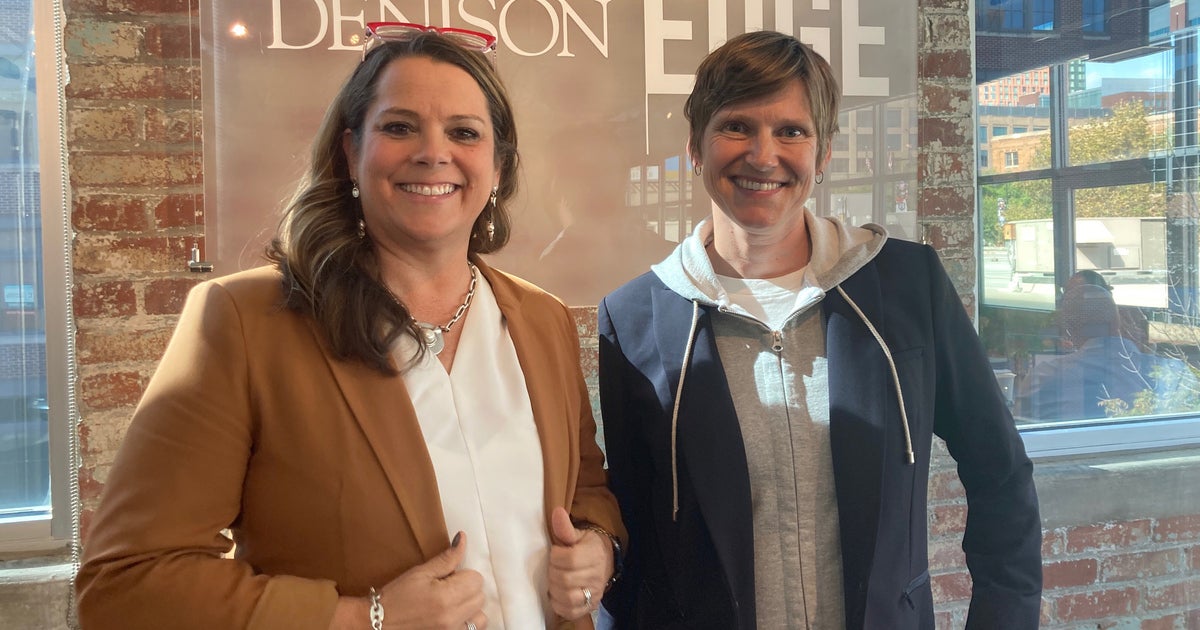Report on the Integration of Artificial Intelligence in Higher Education to Advance Sustainable Development Goals
Executive Summary
A recent AI Summit hosted by Denison University brought together leaders from higher education and the technology sector to strategize on the responsible integration of Artificial Intelligence (AI). The discussions and initiatives presented align significantly with several United Nations Sustainable Development Goals (SDGs), particularly those concerning education, economic growth, innovation, and partnerships. This report outlines how institutions are leveraging AI to enhance educational quality (SDG 4), prepare students for future employment (SDG 8), foster technological innovation (SDG 9), and build collaborative networks for sustainable development (SDG 17).
Advancing Quality Education (SDG 4)
The summit underscored the critical role of AI in achieving inclusive and equitable quality education and promoting lifelong learning opportunities. By integrating AI into academic frameworks, institutions aim to provide learners with the knowledge and skills needed for sustainable development.
- Enhancing Digital Literacy: A primary focus is on increasing digital literacy and ensuring students and staff can use AI tools effectively, responsibly, and ethically, directly supporting SDG Target 4.4, which aims to increase the number of adults with relevant technical skills.
- Curriculum Integration: Denison University has embedded AI competencies throughout its curriculum, using AI to sharpen analytical and critical thinking skills and enhance the classroom experience.
- Equitable Access: The development of custom, secure AI platforms like Denison’s “DenAI” provides equitable access to advanced generative AI tools for the entire campus community at a significant cost savings, promoting inclusive learning environments.
- Certification and Upskilling: The creation of AI certification programs for both students and staff ensures the campus community acquires valuable skills for employment and decent jobs. Over 200 Denison students have earned credentials, boosting their career readiness.
Driving Innovation and Decent Work (SDG 8 & 9)
The strategic implementation of AI in higher education serves as a catalyst for innovation, resilient infrastructure, and sustainable economic growth. By aligning educational outcomes with industry needs, universities are preparing a workforce capable of thriving in an AI-driven economy.
- Fostering Innovation (SDG 9): Institutions are building robust technological infrastructure to support AI development. Denison’s initiatives, including the custom DenAI platform and a new $35 million data science center, exemplify investment in innovation and technological upgrading as called for in SDG 9.
- Career Preparation (SDG 8): A key objective is to prepare students for AI-driven careers, addressing employer demand for AI skills. AI is incorporated into career services to help students secure preferred professions, contributing to full and productive employment.
- Workforce Development: The summit highlighted the importance of empowering all members of the campus community, including staff, with AI skills. This inclusive approach to workforce development supports the goal of achieving decent work for all.
Building Multi-Stakeholder Partnerships (SDG 17)
The AI Summit itself exemplifies the power of partnerships in achieving sustainable development goals. The event fostered a collaborative environment for sharing knowledge, expertise, and technology among diverse stakeholders.
- Cross-Institutional Collaboration: Representatives from numerous colleges and universities, including Bates, Bowdoin, Davidson, Penn State, and Williams, participated in the event.
- Public-Private Partnerships: The keynote address by an Amazon Web Services (AWS) leader highlighted the importance of partnerships between higher education and the technology industry to drive innovation and deepen student engagement.
- Sustained Innovation Network: The summit was positioned not as a one-time conference but as the launch of a sustained AI innovation network. This network will facilitate ongoing collaboration and strategy sharing, embodying the spirit of SDG 17 to strengthen the means of implementation and revitalize the global partnership for sustainable development.
Analysis of Sustainable Development Goals in the Article
1. Which SDGs are addressed or connected to the issues highlighted in the article?
-
SDG 4: Quality Education
- The entire article is centered on higher education institutions integrating AI to enhance learning. It discusses improving digital literacy, providing experiential learning, and embedding AI competencies into the curriculum to ensure students “excel academically.” The goal is to provide inclusive and equitable quality education and promote lifelong learning opportunities.
-
SDG 8: Decent Work and Economic Growth
- The article directly links education with employment outcomes. It highlights that “Employers are telling us they are seeking AI skills” and that AI credentials help “boosting career starts in preferred professions.” This addresses the need to prepare the workforce for future jobs and promote productive employment.
-
SDG 9: Industry, Innovation, and Infrastructure
- The article details significant investments in technological infrastructure and innovation. This includes the creation of a custom AI platform (“DenAI”), the inauguration of a new “$35 million data science center,” and the overall focus on fostering an “AI innovation network.” This aligns with the goal of building resilient infrastructure and fostering innovation.
-
SDG 17: Partnerships for the Goals
- The article describes the “AI Summit,” a collaborative event that brought together multiple higher education institutions (Bates, Bowdoin, Williams, etc.) and a private sector partner (Amazon Web Services). This initiative to “collaborate and share strategies” exemplifies a multi-stakeholder partnership to achieve common goals in education and technology.
2. What specific targets under those SDGs can be identified based on the article’s content?
-
Under SDG 4 (Quality Education):
- Target 4.4: “By 2030, substantially increase the number of youth and adults who have relevant skills, including technical and vocational skills, for employment, decent jobs and entrepreneurship.” The article’s focus on AI certification programs and credentials that students can add to their résumés directly supports this target by equipping them with skills that employers are actively seeking.
- Target 4.3: “By 2030, ensure equal access for all women and men to affordable and quality technical, vocational and tertiary education, including university.” The article mentions efforts to “increase access to learning pathways and experiences” and provide students with “secure, easy access to generative AI tools,” which contributes to ensuring access to quality tertiary education resources.
-
Under SDG 8 (Decent Work and Economic Growth):
- Target 8.6: “By 2020, substantially reduce the proportion of youth not in employment, education or training.” Although the target year has passed, the principle is relevant. The initiatives described, such as the AI credential program, are designed to prepare students for “AI-driven careers” and improve their transition from education to the workforce, thereby reducing youth unemployment.
-
Under SDG 9 (Industry, Innovation, and Infrastructure):
- Target 9.5: “Enhance scientific research, upgrade the technological capabilities of industrial sectors in all countries…and encourage innovation.” The development of the “DenAI” platform, the establishment of a new data science center, and the formation of an “AI innovation network” are direct actions to upgrade technological capabilities and encourage innovation within the higher education sector.
-
Under SDG 17 (Partnerships for the Goals):
- Target 17.17: “Encourage and promote effective public, public-private and civil society partnerships…” The AI Summit, a collaboration between multiple universities and a private company (Amazon Web Services), is a clear example of a public-private partnership designed to share knowledge and advance a common objective.
3. Are there any indicators mentioned or implied in the article that can be used to measure progress towards the identified targets?
-
For SDG 4 (Quality Education):
- Indicator (Implied for Target 4.4): Proportion of youth/adults with ICT/digital skills. The article provides a specific number: “more than 200 Denison students have earned their AI credential,” which serves as a direct measure of students acquiring specific, valuable digital skills.
-
For SDG 8 (Decent Work and Economic Growth):
- Indicator (Implied for Target 8.6): Youth employment rate. While not providing a rate, the article implies this is a key metric by stating the goal is to “boost career starts” and prepare students for professions where employers “value AI skills over other experience.”
-
For SDG 9 (Industry, Innovation, and Infrastructure):
- Indicator (Implied for Target 9.5): Expenditure on research and development/innovation. The article explicitly mentions the investment in a “new $35 million data science center,” which is a quantifiable indicator of investment in innovation infrastructure.
-
For SDG 17 (Partnerships for the Goals):
- Indicator (Implied for Target 17.17): Number of multi-stakeholder partnerships. The article describes the AI Summit, which involved “Representatives from Bates, Bowdoin, Davidson, Penn State, University of Michigan, Williams, and other colleges and universities” as well as Amazon Web Services, indicating the formation of a significant partnership.
4. Summary Table of SDGs, Targets, and Indicators
| SDGs | Targets | Indicators (Mentioned or Implied) |
|---|---|---|
| SDG 4: Quality Education | 4.4: Increase the number of youth and adults with relevant skills for employment. | Number of students who have earned an AI credential (stated as “more than 200”). |
| SDG 8: Decent Work and Economic Growth | 8.6: Reduce the proportion of youth not in employment, education or training. | Improved graduate employment outcomes (“boosting career starts”). |
| SDG 9: Industry, Innovation, and Infrastructure | 9.5: Enhance research and upgrade technological capabilities. | Financial investment in innovation infrastructure (a “$35 million data science center”). |
| SDG 17: Partnerships for the Goals | 17.17: Encourage and promote effective public-private partnerships. | Formation of a multi-stakeholder partnership (the AI Summit involving multiple universities and AWS). |
Source: denison.edu







